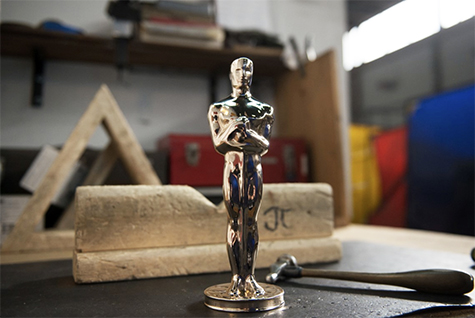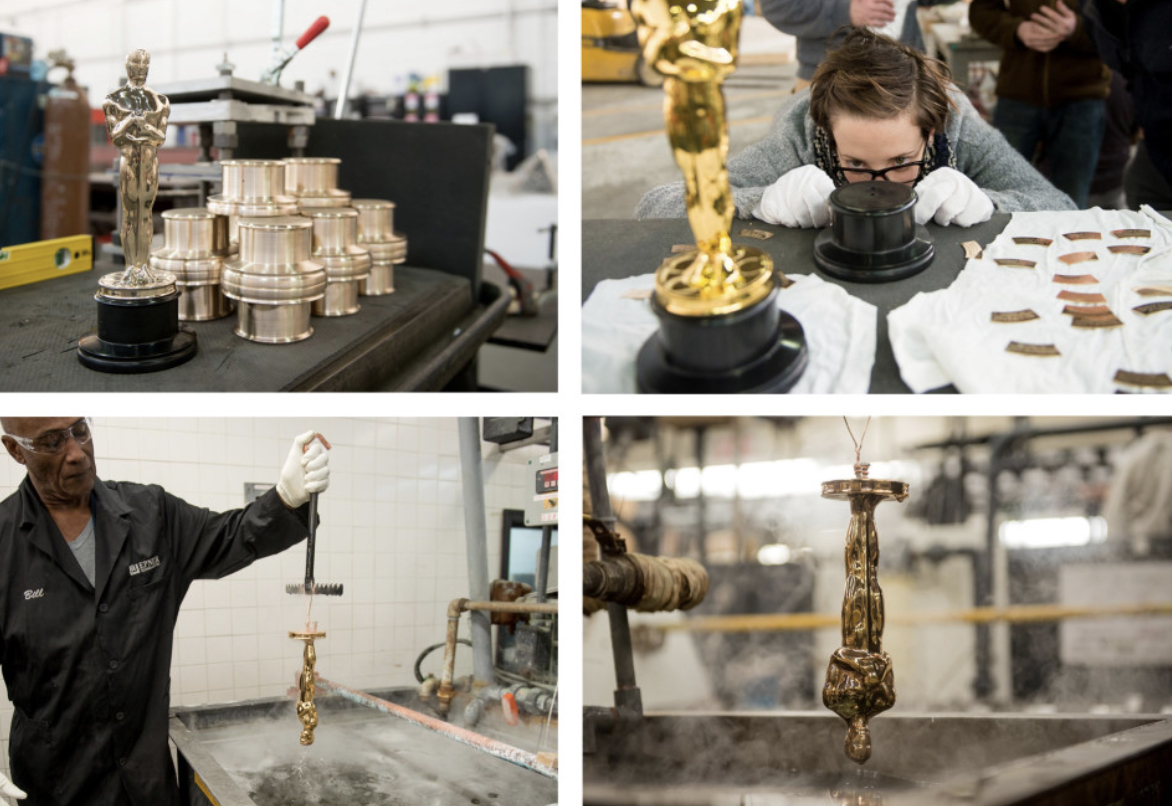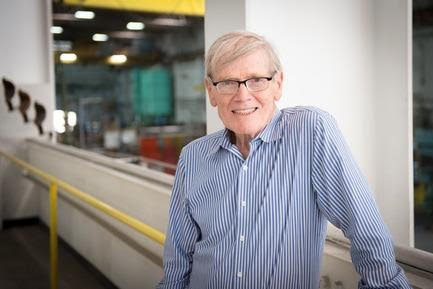Polich Tallix Brings Bronze Back to the Oscars
 A handcrafted Oscar Trophy, created by Polich Tallix.
A handcrafted Oscar Trophy, created by Polich Tallix. Photograph courtesy of Polich Tallix.
Each year as the Academy Awards buzz starts, craftspersons far away from the glamour of Hollywood begin their work on what may be the most well-known trophy in the world.
Officially named the Academy Award of Merit, the statuette is better known by its nickname, Oscar.
Since 2016, craftspersons at UAP Polich Tallix fine art foundry in New York’s Hudson Valley spend about three months each year creating 50 statuettes.
The foundry redesigned the trophy in 2016. Tallix started its Oscar-making process by creating digital scans of the 1929 statuette and a modern-era pedestal base. The digital Oscar was then 3D-printed and molded so the form could be cast in wax.
Each wax statuette is coated in a ceramic shell that is cured and fired at 1,600°F, melting the wax away and leaving an empty Oscar-shaped form. The statuettes are then cast in liquid bronze at more than 1,800°F, cooled, and sanded to a mirror polish finish.
The figure portion of each Oscar is electroplated with a permanent layer of reflective 24-karat gold by Epner Technology, a renowned high-tech specification electroplating company in Brooklyn. The statuette’s bronze base receives a smooth black patina, which is hand-buffed to a satin finish.
Fun fact: When winners receive their awards, the Oscar statuette is actually blank. At the Governor’s Ball after the Oscar ceremony, winners have the name-tags affixed to their statuettes.
The award manufacturing is actually just a tiny part of the work done at the foundry, which was acquired by UAP in April 2019.
Dick Polich, the beloved founder of Polich Tallix, has retired, according to Martha Collins, UAP new business and communications coordinator.
With a legacy that dates back to 1968, Polich Tallix—now UAP Polich Tallix—remains one of the country’s premiere fine art foundries, providing artists with the industrial capabilities and technological expertise required to realize their creative vision.
Current and past artist collaborations include Louise Bourgeois, Alexander Calder, Nancy Graves, Roy Lichtenstein, Jeff Koons, Richard Serra, and Claes Oldenburg.
 The team at Polich Tallix, creating the Oscar trophies using the lost wax casting process.
The team at Polich Tallix, creating the Oscar trophies using the lost wax casting process. Photographs courtesy of Polich Tallix.
UAP was founded in 1993 by brothers Daniel and Matthew Tobin as Urban Artists. They created a studio and workshop that could facilitate projects, work with artists, and realize art for the public realm. Their collaborative approach provided artists the space to develop ideas, investigate materiality, deliver projects, and extend their practice.
Now UAP is a global company focused on public art and architectural design solutions. UAP works across the globe, with key studios and workshops in Brisbane, Shanghai and New York; supported by a network of satellite offices in Chengdu, Shenzhen, Singapore and Melbourne.
UAP’s New York studio has collaborated with Ai Weiwei & Public Art Fund; KPF at Hudson Yards, Cooper Union; Bouroullec Brothers & Miami Design District; J. Mayer H. Und Partner & Times Square Arts; Phillip K. Smith III; SHoP Architects; Erwin Redl and Madison Square Park Conservancy.
Among the projects UAP has been involved with is the 22-foot tall bronze sculpture, entitled “Unity,” which was installed in 2019 at base of Brooklyn Bridge. A colossal bronze arm and hand points towards the sky as a homage to and celebration of the character of the borough of Brooklyn.

The team at Polich Tallix, creating the Oscar trophies using the lost wax casting process.
Photographs courtesy of Polich Tallix.
“The spirit of Brooklyn has always been about upward mobility and connection to roots,” artist Hank Willis Thomas wrote.”The large-scale sculpture of a bronze arm pointing toward the sky is intended to convey to a wide audience a myriad of ideas about individuals and collective identity, ambition, and perseverance.”
The permanent installation was commissioned by the City of New York to reflect the energy and spirit of the borough.
The foundry also played a key role in Kehinde Wiley’s monumental bronze and stone sculpture, Rumors of War, which was temporarily installed on the bustling Broadway Plaza in Times Square last year. In December, it was installed at its permanent home at the Virginia Museum of Fine Art in Richmond.
 Dick Polich, the beloved founder of Polich Tallix.
Dick Polich, the beloved founder of Polich Tallix.Photographs courtesy of Polich Tallix.
A direct response to confederate statues, the 27-foot statue depicts a young, African-American subject dressed in urban streetwear astride a massive horse. It is his largest work to date. Wiley may be best known for his portrait of President Barack Obama.
UAP’s role in this project included the design, engineering, casting, fabrication and installation of the bronze sculpture and plinth, working in close collaboration with the artist and his studio and using a team of highly skilled makers and fine art casting processes. The work is a major collaboration between Times Square Arts in partnership with the Virginia Museum of Fine Arts and Sean Kelly, New York.
“Our team of highly skilled makers have worked alongside the artist’s studio, Sean Kelly, New York and Times Square Arts to transform Kehinde Wiley’s extraordinary vision into a monumental public sculpture for Times Square,” said Daniel Tobin, founder and creative director of UAP at the time of the installation.
Resources:
Also in this Issue:
- Spirit Lines through Copper
- The Legacy of Copper Enameling
- The Multi-Faceted Work of Connie Campbell
- Polich Tallix Brings Bronze Back to the Oscars
- Rare Bronze Dalí Exhibit Opens at Aspen’s ChaCha Gallery
